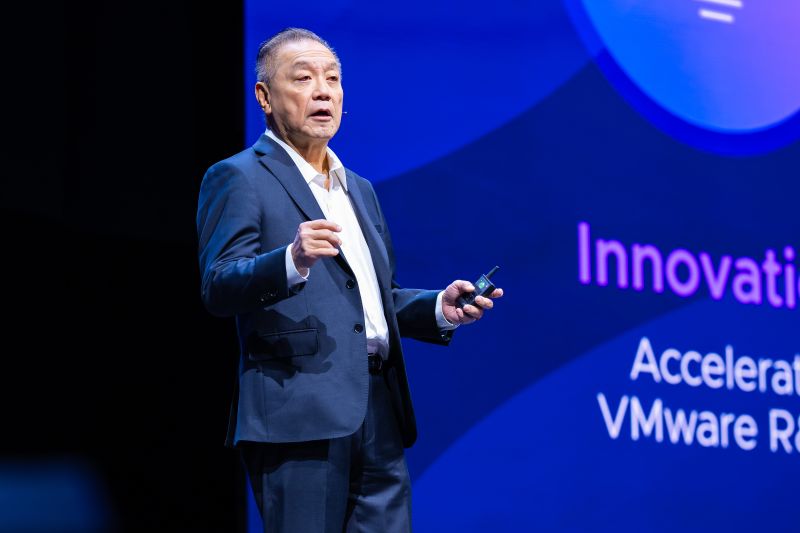In Las Vegas at VMware Explore 2025, Broadcom used the spotlight to reposition its enterprise cloud strategy. The introduction of VMware Cloud Foundation version 9.0 and the elevation of Private AI as a native component signaled a shift toward private cloud infrastructures optimized for modern demands. Enterprise CIOs, developers, and IT operations alike are rethinking cloud architecture. This article dives into what the announcements mean, how they affect AI deployment, and why VCF is becoming central to enterprise digital transformation.
VCF 9.0 Becomes AI-Native Foundation
One of the biggest shifts from VMware Explore is how VMware Cloud Foundation 9.0 transforms into an AI-native platform. Private AI services are now delivered as part of the core VCF offering. This change reduces the friction of adding AI capabilities. Rather than tacking on separate tools, organizations will now get:
- Integrated AI infrastructure with support for GPUs from multiple vendors
- AI model runtime for workloads across disparate hardware without rewriting applications
- New tools for AI model deployment, training, inference and agentic automation
By embedding these capabilities, VCF is poised to be more than just infrastructure. It becomes the backbone of enterprise innovation for those adopting safe, scalable, and governance-centric private AI.
Developer Agility, Security, and Hybrid Flexibility
The new strategy balances agility for developers and control for enterprise operations. Developers want speed and flexibility—Kubernetes, CI/CD pipelines, containerized applications, and rapid deployment environments. VCF 9.0 and associated private AI services provide developer tools that are more accessible and integrated than before. At the same time, enterprise needs for security, compliance, and control are not being ignored.
Key enhancements include advanced cyber compliance features to support regulated industries, improvements in networking, storage, and unified security controls. This ensures that while developers experiment and build, the underlying infrastructure enforces policies, isolates sensitive data, and handles multi-tenant workloads securely.
Hybrid flexibility is also central. Workloads can be managed on-premises, at the edge, or in managed cloud environments. Organizations are demanding the ability to move between environments without compromising performance or security. VCF 9.0 supports a range of deployment options, making hybrid cloud not just a buzzword but a practical strategy.
Strategic Partnerships and Product Innovations
VMware did not advance its AI-cloud strategy in isolation. At Explore, the company revealed partnerships that extend its capabilities. These collaborations with Canonical, NVIDIA, and AMD broaden hardware options and operating system support. This helps enterprises build systems that are optimized across various architectures, whether for inference, model training, or AI acceleration.
Product innovations also stood out. The “Tanzu Data Intelligence” data lakehouse emerged as a unified platform for handling multimodal data with low latency. Tanzu Platform 10.3 adds features to improve application delivery and integrate generative AI safely. Additional advancements in cyber compliance, load balancing, observability, and model context protocol (MCP) pave the way for enterprise AI workloads that are compliant, secure, and performant.
Implications of Private AI and VCF for Enterprises
What does this mean for enterprises evaluating cloud, AI, or digital transformation initiatives? First, cost and control: Private AI embedded in VCF 9.0 reduces reliance on public cloud for sensitive or regulated workloads, potentially reducing cloud spend. Data privacy and compliance become easier to maintain when infrastructure is under tighter enterprise oversight.
Second, performance and efficiency: With support for multiple GPU types and hardware acceleration, enterprises can deploy demanding AI models with less overhead. Tools for unified deployment, auto-scaling, and infrastructure abstraction help improve resource utilization.
Third, developer experience matters now more than ever**. Companies that empower developers with containerization, modern runtimes, and streamlined tooling tend to be more innovative and agile. VCF’s enhancements reflect a growing recognition that ops, devs, and data teams must work in tighter alignment.
Fourth, regulation and security remain top priorities**. As organizations adopt AI, their risk exposure increases. Advanced compliance services, security controls, and hardened infrastructures are being elevated. Enterprises in finance, healthcare, government and other regulated sectors will benefit from these integrated protections.
Challenges and Trade-Offs Ahead
While the announcements are impressive, there are risks and trade-offs enterprises must consider. Migrating existing applications and workloads to new architectures is nontrivial. Cultural and organizational change is required: alignment between teams, adjusting operational models, and training staff.
Another concern is the cost of running specialized hardware. Although VCF 9.0 supports multiple GPU vendors, maintaining, cooling, licensing, and securing GPU-rich environments incurs ongoing expense. Enterprises must weigh capital and operating costs against the expected value of performance, privacy, and control.
Further, as AI becomes central, enterprise exposure to supply chain, software vulnerabilities, and data governance risks increases. Ensuring robust model versioning, auditing, and defensive strategies is essential.
Finally, competing public cloud platforms are still strong in general purpose compute, globally distributed services, and mature ecosystems. Organizations need to carefully evaluate whether private AI via VCF offers the best ROI compared to hybrid or cloud-agnostic strategies.
What Enterprises Should Do Now
To make the most of this transformation, enterprises should:
- Pilot AI workloads on VCF 9.0 or equivalent private cloud platforms to validate performance and cost
- Inventory data sensitivity and regulatory constraints to align infrastructure and compliance needs
- Build internal pipelines for model monitoring, governance, and lifecycle management
- Partner with strong hardware and OS providers to avoid vendor lock-in and benefit from hardware advances
- Prioritize developer tooling and collaboration between ops, security, and development teams
Businesses that invest early in private AI readiness may gain competitive advantage in performance, security, and regulatory alignment.
The announcement that Private AI becomes a core part of VMware Cloud Foundation 9.0 marks a pivotal moment. Enterprises seeking to balance speed, security, control, and performance now have an integrated path that reduces friction. While trade-offs and implementation challenges remain, the trajectory is clear: Private AI will no longer be optional in modern cloud strategy. VCF 9.0 positions organizations that adopt early to lead in the next wave of AI-driven innovation.
Read More






 Saturday, 20-12-25
Saturday, 20-12-25







